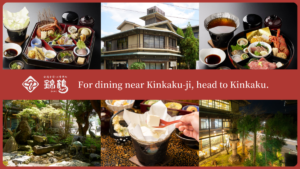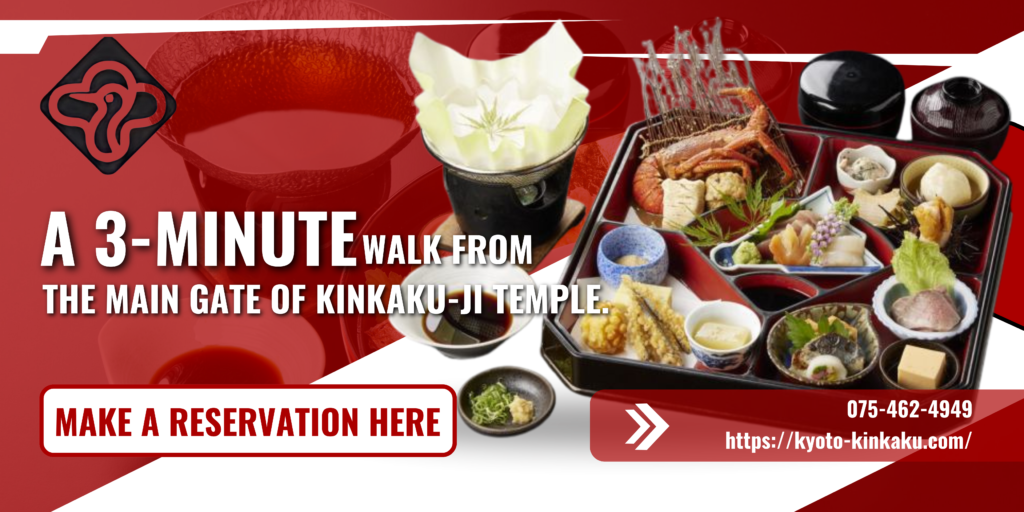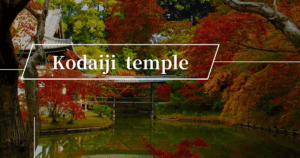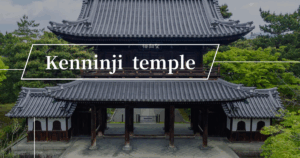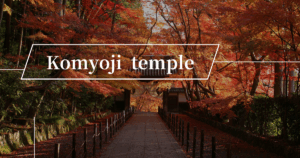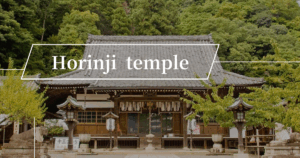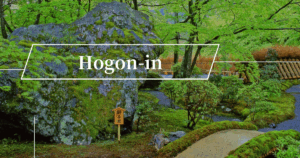Kiyomizu-dera Temple, located in the Higashiyama district of Kyoto, is a famous landmark that symbolizes Japanese history and culture.
It was founded around 778-780, and the current building was rebuilt in the early 17th century.
The most famous spot is Kiyomizu no Butai, which offers a spectacular view of Kyoto city and the surrounding mountains.
Kiyomizu-dera Temple is also registered as a UNESCO World Heritage Site, and its beauty and historical value are internationally recognized.
In this article, we will explain in detail about Kiyomizu-dera Temple, including its history and highlights.
What kind of place is Kiyomizu-dera Temple?
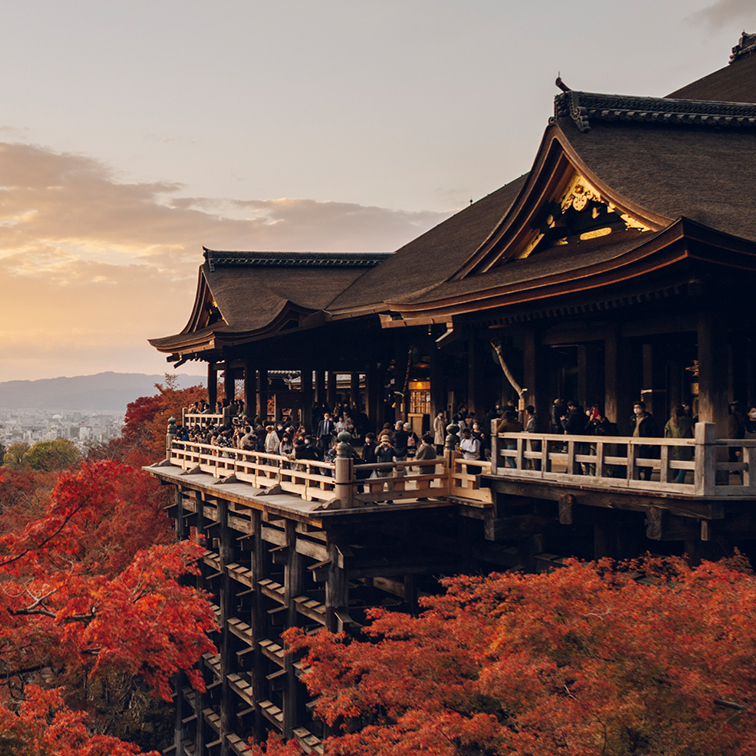
Kiyomizu-dera Temple is a historic temple located in Higashiyama Ward, Kyoto City, and is also registered as a World Heritage Site.
It was founded in 778, and the current building was rebuilt in the early 17th century.
The most famous of these is the Kiyomizu Stage, which juts out from the cliff and offers magnificent views over Kyoto city and the surrounding mountains.
Within the grounds are the main hall, which enshrines the Kannon Bodhisattva, and Otowa Waterfall, which is said to grant blessings in love.
Kiyomizu-dera Temple is not just a tourist destination, but is also known as a place where you can experience traditional Japanese culture and harmony with nature.
It especially attracts visitors during the autumn foliage and spring cherry blossom seasons.
In this way, Kiyomizu-dera Temple is a place where history and nature come together, and where you can feel the deep charm of Kyoto.
The History of Kiyomizu-dera Temple
Let’s take a look at the history of Kiyomizu-dera Temple.
We will unravel the history of Kiyomizu-dera Temple, which fascinates many people, and its role in the modern world.
The founding and early history of Kiyomizu-dera
Kiyomizu-dera Temple was founded in 778 at the end of the Nara period.
The origin of the temple’s founding is based on a legend that a monk named Kenshin received a prophecy in a dream, met a hermit named Gyoei Koji at a place with a beautiful waterfall on Mt. Otowa, and was ordered to carve and enshrine a statue of the Thousand-Armed Kannon.
Thus, Kiyomizu-dera has a history rooted in nature and mystical episodes, and Otowa Falls is believed to bring longevity and good health.
In its early history, Kiyomizu-dera developed into an important Buddhist centre and attracted many followers.
Reconstruction of the Edo Period and Its Influence on the Modern Era
During the Edo period, Kiyomizu-dera was rebuilt in 1633 under the patronage of Tokugawa Iemitsu.
The wooden stage and main hall that can be seen today were completed.
The stage is constructed without using nails and is said to be earthquake-resistant.
During the Edo period, it also became popular as a tourist destination, and many people began to visit.
The reconstruction of Kiyomizu-dera Temple also contributed to the preservation of Japanese culture and history.
There was a time when jumping off the stage at Kiyomizu was particularly popular, but it was banned during the Meiji period.
The role and appeal of Kiyomizu-dera Temple in modern times
In modern times, Kiyomizu-dera Temple plays an important role not only as a tourist destination but also as a cultural and historical symbol.
Many tourists visit during the spring cherry blossom season and autumn foliage season to enjoy the magnificent scenery.
Kiyomizu-dera Temple is also registered as a UNESCO World Heritage Site , and its beauty and historical value are internationally recognized.
Kiyomizu-dera Temple is known as a place where you can experience traditional Japanese culture and harmony with nature, leaving a deep impression on all who visit.
There are many things to see, especially the main hall that enshrines Kannon Bodhisattva and Jizoin Temple, which is said to grant blessings in love.
What to see at Kiyomizu-dera Temple
Kiyomizu-dera Temple has many attractions that will captivate all visitors.
Here we will introduce three carefully selected highlights.
- Kiyomizu Stage
- Otowa Falls
- Jizoin Temple (Inside the Temple)
Kiyomizu Stage

The most famous attraction of Kiyomizu-dera Temple is the Kiyomizu Stage.
The stage juts out from the cliff, offering spectacular views over Kyoto city and the surrounding mountains.
It especially attracts visitors during the cherry blossom season in spring and the autumn leaves in fall.
The Kiyomizu Stage is popular with tourists and photography enthusiasts, and is especially beautiful when lit up at sunset and at night.
In addition, many trees are planted around the stage, allowing you to enjoy different scenery with each season.
Otowa Falls
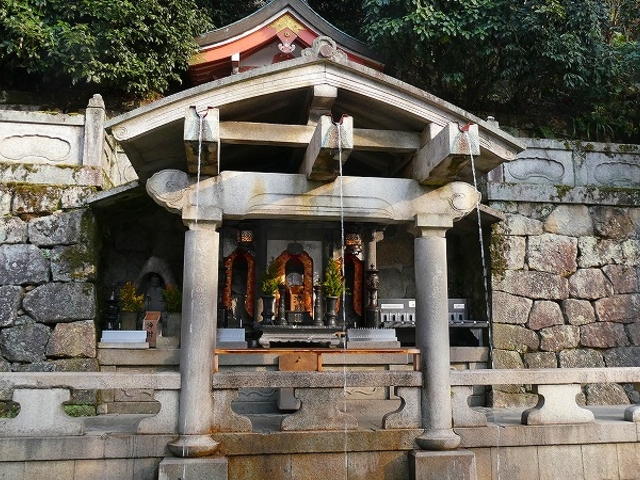
Otowa Falls is the origin of the name of Kiyomizu-dera Temple and is believed to bring longevity and good health.
The waterfall is located below the main hall of the temple and visitors can drink the water from a long-handled cup.
The water from the falls is divided into three streams, each of which is said to have different benefits.
Otowa Falls is an iconic sight at Kiyomizu-dera Temple and attracts many tourists.
Jizoin Temple (Inside the Temple)
At Jizoin Temple, you can have an interesting experience called “Tainai-mawari.”
This means going through a completely dark tunnel and travelling inside the Buddha’s womb .
There are no visual clues inside the tunnel so you must rely on large prayer beads set along the walls to guide your way.
This experience is said to symbolize rebirth or reincarnation.
Many people, especially those praying for the health of women and children, visit the area around the womb.
What is the best season to visit Kiyomizu-dera Temple?
The recommended seasons to visit Kiyomizu-dera Temple are spring and autumn.
In spring, the park is filled with beautiful cherry blossoms and is specially lit up at night.
The cherry blossoms usually bloom between late March and early April and although they are short-lived, they are a fascinating sight to see.
Autumn is the season of autumn leaves, and there are about 1,000 maple trees planted around Kiyomizu-dera Temple. The most beautiful time is from mid- to late November.
During this time, the area is also lit up at night, creating a fantastic atmosphere.
Both seasons are crowded with tourists, so we recommend visiting early in the morning or in the evening.
Access to Kiyomizu-dera Temple
Kiyomizu-dera Temple is located in Higashiyama Ward, Kyoto City, and can be accessed by various means, including trains and buses.
Here, we will look at how to get there from Kyoto Station and from Kinkakuji Temple.
Access from Kyoto Station
You can get to Kiyomizu-dera Temple from Kyoto Station by bus, taxi, or on foot.
If you take the bus, take Kyoto City Bus No. 206 or No. 86 and you will arrive at the bus stop near Kiyomizu-dera Temple in about 15 to 20 minutes.
Then it’s about a 12 minute walk.
If you take a taxi, it will take about 25 minutes, but it may take longer if there is heavy traffic.
There is also a route that takes about 20 minutes on foot from Keihan Kiyomizu-Gojo Station via the JR line and Keihan Electric Railway.
Access from Kinkakuji Temple
The most convenient way to get from Kinkakuji Temple to Kiyomizu-dera Temple is by bus.
Take Kyoto City Bus No. 205 from Kinkakuji to Kawaramachi-Gojo in about 35 minutes.
Afterwards, walk to Kiyomizu-dera Temple.
Alternatively, you can take a taxi, which takes about 12 minutes but is a bit more expensive.
Kiyomizu-dera Temple admission fees and opening hours
Basic information about Kiyomizu-dera Temple is summarized in the table below.
| item | Contents |
|---|---|
| location | 294 Shimizu 1-chome, Higashiyama-ku, Kyoto City, Kyoto Prefecture |
| Visiting hours | Temple grounds: 6:00-18:00 (until 18:30 in July and August) |
| Admission fee | Adults and high school students: 500 yen, elementary and junior high school students: 200 yen |
| Business hours | 6:00 – 18:00 For the special nighttime viewing period, please refer to the official website. |
| parking | Not available within the temple grounds. Use nearby parking lots. |
| Estimated travel time | 50 to 60 minutes |
Recommended spots around Kiyomizu-dera Temple
There are also several recommended spots around Kiyomizu-dera Temple.
In this chapter, we will introduce the spots you should definitely visit when you visit Kiyomizu-dera Temple.
Sannenzaka and Ninenzaka
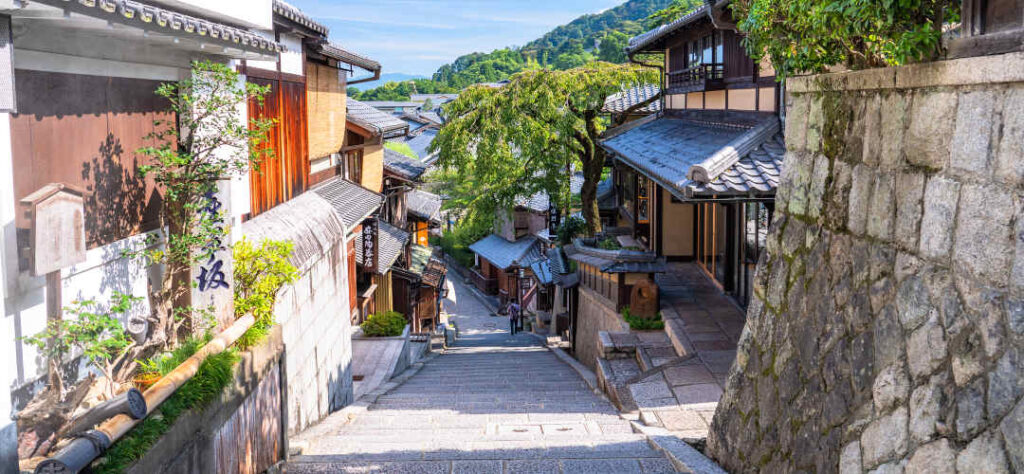
Sannenzaka and Ninenzaka are traditional stone-paved slopes near Kiyomizu-dera Temple, where you can feel the historical atmosphere of Kyoto.
Sannenzaka in particular has been lined with merchant houses since ancient times, and even today there are many teahouses and souvenir shops lined up along the street.
Visitors can enjoy the old townhouses and tea shops, and spend a relaxing time that is typical of Kyoto.
Both slopes are also known as routes to Kiyomizu-dera Temple and are particularly attractive to visitors during the spring cherry blossom and autumn foliage seasons.
Along the slope, there are many restaurants and cafes that serve dishes made with local ingredients, allowing you to enjoy the flavors of Kyoto.
Jishu Shrine
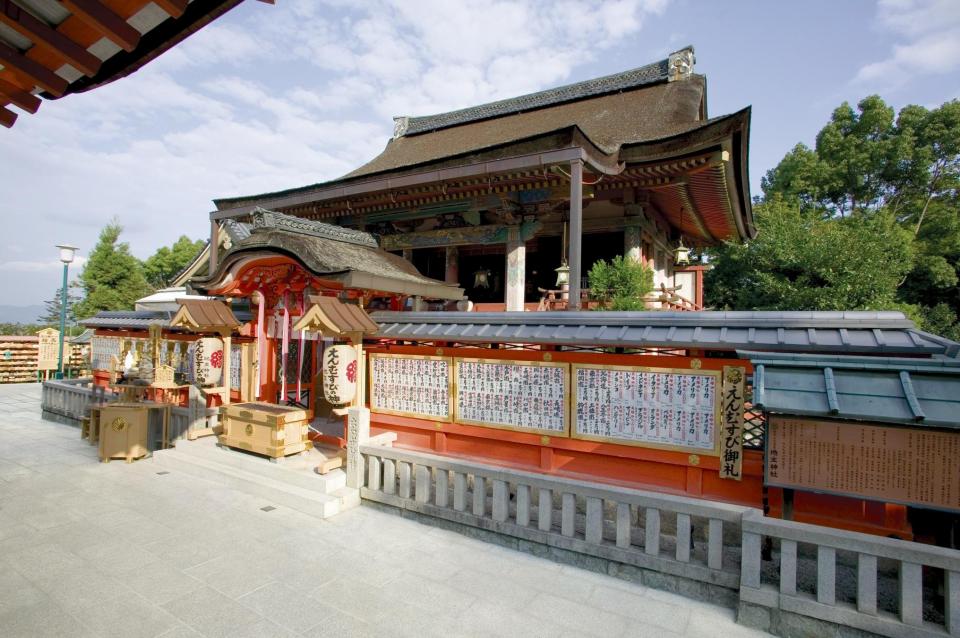
Jishu Shrine is a shrine located within the grounds of Kiyomizu-dera Temple, and is famous for granting blessings in love and finding a partner.
There is a stone called the “Stone of Successful Love,” and it is said that if you walk from one stone to the other with your eyes closed, your love will be fulfilled .
There is also a place called the “Cursed Cedar,” where an old legend remains.
Many young couples visit the shrine to pray for a happy relationship.
The area around the shrine is characterized by a tranquil atmosphere, and is captivating to visitors during the spring cherry blossom season and autumn foliage season.
Kiyomizuzaka
Kiyomizuzaka is a slope known as the route to Kiyomizu-dera Temple and is visited by many tourists.
This slope has been used by many pilgrims since ancient times.
It especially attracts visitors during the cherry blossom season in spring and the autumn leaves in fall.
There are many souvenir shops and restaurants along the slope, where you can enjoy typical Kyoto cuisine and souvenirs.
Also, halfway up the slope is the Niomon Gate, the entrance to Kiyomizu-dera Temple, with its beautiful and impressive vermilion-painted gate.
Frequently asked questions about Kiyomizu-dera Temple
summary
Kiyomizu-dera Temple is a historic temple located in Higashiyama Ward, Kyoto City, and is also registered as a World Heritage Site.
The most famous spot is Kiyomizu no Butai, where you can enjoy a magnificent view of Kyoto city and the surrounding mountains.
There are many sights to see within the temple grounds, including the main hall that enshrines Kannon Bodhisattva and Otowa Falls.
Be sure to visit Kiyomizu-dera Temple and experience the deep history and natural beauty of Kyoto.
Kiyomizu-dera Temple is a place where you can experience traditional Japanese culture and harmony with nature.
